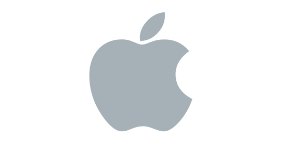
Personal Capital vs Mint: The most Powerful Trust Tools
It’s crucial to hove a Tools for your finances. that one will help you for your Money issue Management in day-to-day living. Personal Capital vs Mint are digital Tools that may now help you effectively to Manage and track your finances. This article examines the functionality, usability, security protocols, and general worth of various technologies in comparison. These intuitive apps play a critical role in enabling people to make well-informed financial decisions in light of evolving financial conditions, guaranteeing a safer and more efficient method of money management. then which one is the Most Powerful Trust Tools to use.

What is the Most Powerful Trust Tool your Money Management?
1.Tools Features and Functionality
Mint and Personal Capital both provide extensive tools to help customers manage their money. The main areas of interest for Intuit-owned Mint are tracking expenses and creating budgets. It helps users create financial objectives, gives them a thorough picture of their spending patterns, and reminds them when bills are due. Mint also provides access to your credit score and credit monitoring tools.
However, Personal Capital provides a wider selection of services. It offers investing features in addition to tracking expenses and creating budgets. Users may obtain a comprehensive understanding of their net worth and portfolio performance by connecting their retirement and investment accounts. For consumers with sizable investment portfolios, Personal Capital additionally provides a personalized financial counselor service.
2.Tools Usability and Ease of Navigation
When it comes to usability, both platforms offer well-designed interfaces that are easy to navigate. Mint offers a visually appealing dashboard that provides a snapshot of your financial standing. The platform categorizes your expenses automatically, making it effortless to track your spending. Mint’s mobile app is also user-friendly, allowing users to monitor their finances on the go.
Personal Capital provides a visually compelling dashboard as well, complemented by intuitive navigation. The platform makes it simple to track all aspects of your financial life, from day-to-day transactions to long-term investment performance. Personal Capital’s mobile app mirrors the web platform’s functionality, ensuring seamless user experience across devices.
3.Tools Security and Privacy
Both Personal Capital and Mint take strong security precautions to safeguard consumers’ financial data. To protect data transfer, Mint employs encryption technologies and does routine vulnerability testing. In contrast, Personal Capital provides two-factor authentication as an extra security measure to guarantee that only those with permission may access your account. Furthermore, Personal Capital utilizes 256-bit encryption, which is the same security protocol used by banks.
4.Tools Value and Pricing
Mint is a free service, that generates revenue through strategic partnerships and advertising. While this makes it accessible to a wider user base, the continuous presence of targeted ads may be a downside for some users.
On the other hand, Personal Capital charges a fee for their personalized financial advisor service, making it more suitable for individuals with higher investment portfolios. However, Personal Capital’s basic budgeting and financial tracking features remain free.
Conclusion
Your financial demands and preferences will ultimately determine which of Personal Capital and Mint is best and Most Powerful Trust Tools for you. For those searching for a handy, free application primarily for tracking expenses and creating budgets, Mint is a great option. However, individuals who want a more thorough financial management experience—which includes investment tracking and individualized financial advice—should choose Personal Capital.
In the end, Personal Capital vs Mint are both effective programs that can help you take charge of your money management issues. To make the best decision that suits your needs and contributes to your long-term financial success, think about assessing your financial objectives, priorities, and budget.






